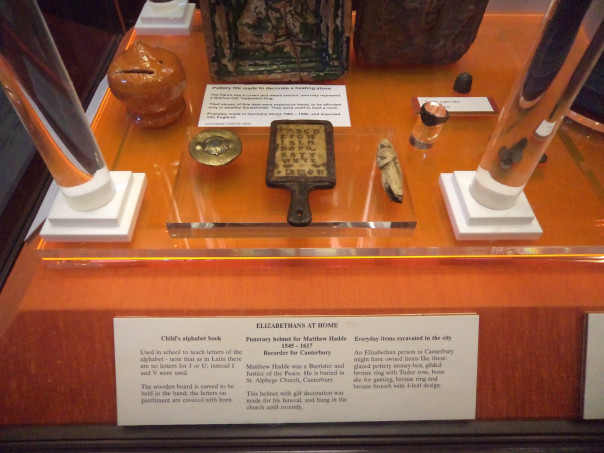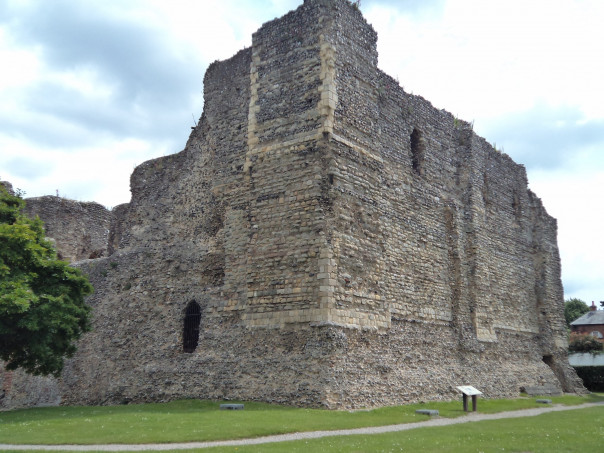I thought that I would share some very exciting news with you. This week marks the launch of a new website at https://maritimebritain.org/ that features two innovative projects, and for the Centre the key one is ‘Maritime Kent’ at https://maritimebritain.org/maritime_kent/ which comes from the collaborative project involving Drs Craig Lambert and Robert Blackmore at the University of Southampton and Dr Sheila Sweetinburgh at Canterbury Christ Church University.

Our 3-year funded project, ‘Kent’s Maritime Communities and their European Neighbours: Connections and Relations Across the Narrow Seas, c.1450–c.1650’ will bring together evidence from the national and Kent archives to investigate the growth and development of Kent’s merchant fleet and the coastal communities involved in this key period of the county’s history. Furthermore, there are two allied doctoral projects at CCCU being undertaken by Kieron Hoyle and Jason Mazzocchi. Kieron is investigating the transformation during Tudor times of Dover’s medieval pilgrim hospital to become a key aspect of the Crown’s naval harbour works. For more details see: https://www.canterbury.ac.uk/news/new-doctoral-research-to-uncover-tudor-past-of-dovers-maison-dieu . Meanwhile, Jason, as a part-time postgraduate, is examining Faversham during the early Stuart period and currently is exploring the dispute over the oyster fishery, a key aspect of the town’s identity. Consequently, please do keep a watch on this new website because we will be adding materials to it over the next couple of years to provide an exciting resource, as well as showcasing some of our findings and publishing our analyses in various forms.
For the remainder for this week, I want to focus on the Social History strand at Tudors & Stuarts 2023: https://www.canterbury.ac.uk/tudors-stuarts to provide a taster of the range of talks we have on offer. Among our great line-up of speakers, Professor Catherine Richardson on the evening of Friday 28 April will be exploring what it felt like to live in an early modern house, telling us about the sights, sounds and smells, the levels of light, warmth and comfort. And by so doing, she will offer stories about such lived experiences from the hilarious to the tragic.

For those who want to enjoy one of our two guided tours on offer on Saturday morning, you have the chance to join Professor Paul Bennett, whose knowledge of Canterbury’s past is encyclopaedic, as he explores ‘Early Tudor Canterbury’. For he will be looking at the standing buildings around the Buttermarket (Tudor Bulstake) when Becket’s shrine still mattered, and the city and cathedral were also experiencing the influence of the English Renaissance.
Also on Saturday morning you might be interested to find out about early Protestant almshouses and how much they differed, or not, from their medieval predecessors, especially in a county that had vast numbers of such places, an abundance that continues through to the present day. Moreover, due to the quality of Kent’s archives, we can investigate the lives of some who found shelter in such institutions, examining the way poor, elderly and infirm people were treated in Tudor times.
Keeping with an exploration of the lives of ordinary people, Professor Steven Gunn on Saturday afternoon will discuss some of the hazards that led to their death and thus the holding of coroners’ inquests. From these accidents involving driving carts, playing football and attending church services he will not only examine the characteristics of life in Kent, but explore how changes in technology, religion and society affected everyday life.

Then as one of the last talks on Saturday, Professor Vanessa Harding will take us to 17th-century London and guide us through this turbulent period using the life and writings of Richard Smyth. For as a law-officer he worked in the City throughout his adult life, managing to negotiate the upheavals of the 1640s and 1650s despite his Royalist and Anglican sympathies, living on to enjoy a comfortable retirement and dying over a decade after Charles II’s Restoration in 1660.
Sunday provides more opportunities to explore Social History, offering a choice between Dr Elaine Leong’s lecture on early modern medicinal technologies and contemporary ideas about the body, and an assessment of what it was like to be Jewish in this period through an investigation of Jewish food and identity. Dr Maria Diemling will draw on several case studies to illustrate how eating or avoiding certain kinds of food allowed Jews to maintain a distinct ethno-religious identity that nevertheless was at the same time contested and negotiated.
Finally for Sunday afternoon, why not explore either ‘Understanding England’s Past’ in the company of Dr Onyeka Nubia where he will examine critically evidence for diversity in English history and investigate ideas of English identity; or join Imogen Corrigan when she assesses El Greco and his works. For as an artist, he was influenced by Renaissance greats such as Titian and Tintoretto, yet he developed his own distinctive style that makes his work instantly recognisable, and many are surprised to learn that he lived in the 16th/17th centuries and not modern times. Thus, with all these fabulous talks to chose from, we hope you will have a brilliant time in Canterbury.

Keeping with history and Canterbury, this week I called in at Eastbridge Hospital because Louise Knight and her team were putting together the final touches before the hospital and the Franciscan Gardens reopen to visitors. This is an exciting moment in the development of both and it was great to see the new brief history of The Franciscan Gardens since 1224 that is going on sale there. It offers a good, handy introduction to the Greyfriars of Canterbury and the long history of their site – from post-Dissolution gentry mansion to the return of the Franciscan brothers (Anglican Franciscans) in the early 21st century. Again, watch this space because there will be more on this relationship between CKHH and Eastbridge to come, including hopefully another Green Dragon in the Gardens as part of Dr Diane Heath’s funded ‘Medieval Animals Heritage’ project and more on the history and heritage of the hospital itself.
The other meeting I attended this week was one organised by Connie Nolan, a Canterbury city councillor, in response to the city council’s success in gaining a central government ‘levelling-up bid’. For one of the projects that the council included in its portfolio concerns Canterbury’s Norman keep, which is the main surviving structure in what was a considerable castle site of about 4 acres. Even though this might be seen as early days, the project timing is tight because it is due to finish by March 2025 which means there was a feeling at the meeting that expert consultation needs to take place now as well as continuing as the project develops. As Connie had hoped, there were several members of the Friends of Canterbury Castle in the room at St Mildred’s church, such as a professional Canterbury archaeologist, a conservation architect, and medieval historians including those with specific expertise on castles. It was also great to see another local councillor, the lead from Canterbury BID and other interested parties, including local residents, as well as the two from the council’s project team who had come to explain matters and hear comments and suggestions.

Those present were happy to congratulate the team on its success in securing this funding, but there was a considerable degree of scepticism about some of the ideas that had been put forward thus far. However, all agreed that the most important first step is to get a stone-by-stone assessment and a laser survey done of the whole keep as soon as possible and that those undertaking this work should involve an archaeologist to advise on and monitor the operation. As the keep is a scheduled ancient monument, Historic England will continue to be involved, but drawing on local expertise would seem to be an obvious part of the process. For in many ways, it has been the lack of regular maintenance on the structure that has got the city into this position of needing a large capital sum to put right these issues.
Another matter that generated discussion was the need to take account of the building and its history. Interpretation rests on understanding the phasing of the castle as a whole within the local context, but equally within what was happening regionally and nationally. Moreover, this ancient building in context has a complex and nuanced time-depth, all of which requires knowledge and understanding if Canterbury is going to do justice to its medieval and post-medieval history as it seeks to interest and educate residents as well as visitors.

All agreed that getting local involvement is crucial, and collaboration for all the different projects across the city may mean some overlap of key people whose expertise should be sought as much as possible. For a joined up project does not mean just a series of routes across the city from one disparate place to another, but should be a means to give people a holistic understanding across space and time of Canterbury’s place in the past, today and in the future.
This lively meeting was a productive first step, however time is of the essence in such a short timetable and it will be interesting to see how this turns into action, not just at the castle keep, but at the Poor Priests’ Hospital and at other places across the city. So thanks Connie for kick-starting the process of engagement between the city (council) and its citizens and those present were grateful to the project team for coming along and sharing news of this exciting new venture.
 Centre for Kent History and Heritage
Centre for Kent History and Heritage Sheila Sweetinburgh
Sheila Sweetinburgh 1534
1534


Thanks for all this excellent information
Delighted to hear, Dawn, that you are finding the blog useful, and feel free to pass it on.